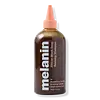What's inside
What's inside
 Key Ingredients
Key Ingredients

 Benefits
Benefits

 Concerns
Concerns

 Ingredients Side-by-side
Ingredients Side-by-side

Water
Skin ConditioningSodium Lauryl Sulfoacetate
CleansingDisodium Laureth Sulfosuccinate
CleansingSodium Lauroyl Sarcosinate
CleansingCocamidopropyl Hydroxysultaine
CleansingCocamidopropylamine Oxide
CleansingSodium Cocoyl Isethionate
CleansingPEG-150 Distearate
EmulsifyingDi-PPG-2 Myreth-10 Adipate
EmollientCocamide Mea
EmulsifyingGlycol Distearate
EmollientPolysorbate 20
EmulsifyingCaffeine
Skin ConditioningCinnamidopropyltrimonium Chloride
Glycerin
HumectantAmodimethicone
C11-15 Pareth-7
EmulsifyingLaureth-9
EmulsifyingTrideceth-12
EmulsifyingHydrolyzed Wheat Protein
Skin ConditioningCaprylyl Glycol
EmollientPhenoxyethanol
PreservativeWheat Amino Acids
Skin ConditioningHydrolyzed Soy Protein
HumectantDimethyl Sulfone
SolventPolyquaternium-10
Taurine
BufferingAspalathus Linearis Extract
Skin ConditioningParfum
MaskingBenzyl Benzoate
AntimicrobialBenzyl Cinnamate
PerfumingTetrasodium EDTA
Citronellol
PerfumingHexyl Cinnamal
PerfumingLinalool
PerfumingCI 15985
Cosmetic ColorantBiotin
AntiseborrhoeicCalcium Pantothenate
Alcohol Denat. Sd Alcohol 40
SolventTocopherol
AntioxidantAesculus Hippocastanum Seed Extract
Skin ConditioningRetinyl Palmitate
Skin ConditioningLinoleic Acid
CleansingPEG-35 Castor Oil
EmulsifyingInositol
HumectantCopper Tripeptide-1
Skin ConditioningCI 14700
Cosmetic ColorantPolyquaternium-11
Arginine
MaskingPEG-12 Dimethicone
Skin ConditioningPanax Ginseng Root Extract
EmollientAcetyl Tyrosine
Skin ConditioningArctium Majus Root Extract
Skin ConditioningEthylbisiminomethylguaiacol Manganese Chloride
AntioxidantNiacinamide
SmoothingOrnithine Hcl
Skin ConditioningZinc Gluconate
Skin ConditioningCitrulline
Skin ConditioningGlucosamine Hcl
Hydrolyzed Proanthocyanidin
AntioxidantCitric Acid
BufferingWater, Sodium Lauryl Sulfoacetate, Disodium Laureth Sulfosuccinate, Sodium Lauroyl Sarcosinate, Cocamidopropyl Hydroxysultaine, Cocamidopropylamine Oxide, Sodium Cocoyl Isethionate, PEG-150 Distearate, Di-PPG-2 Myreth-10 Adipate, Cocamide Mea, Glycol Distearate, Polysorbate 20, Caffeine, Cinnamidopropyltrimonium Chloride, Glycerin, Amodimethicone, C11-15 Pareth-7, Laureth-9, Trideceth-12, Hydrolyzed Wheat Protein, Caprylyl Glycol, Phenoxyethanol, Wheat Amino Acids, Hydrolyzed Soy Protein, Dimethyl Sulfone, Polyquaternium-10, Taurine, Aspalathus Linearis Extract, Parfum, Benzyl Benzoate, Benzyl Cinnamate, Tetrasodium EDTA, Citronellol, Hexyl Cinnamal, Linalool, CI 15985, Biotin, Calcium Pantothenate, Alcohol Denat. Sd Alcohol 40, Tocopherol, Aesculus Hippocastanum Seed Extract, Retinyl Palmitate, Linoleic Acid, PEG-35 Castor Oil, Inositol, Copper Tripeptide-1, CI 14700, Polyquaternium-11, Arginine, PEG-12 Dimethicone, Panax Ginseng Root Extract, Acetyl Tyrosine, Arctium Majus Root Extract, Ethylbisiminomethylguaiacol Manganese Chloride, Niacinamide, Ornithine Hcl, Zinc Gluconate, Citrulline, Glucosamine Hcl, Hydrolyzed Proanthocyanidin, Citric Acid
Water
Skin ConditioningDecyl Glucoside
CleansingButyrospermum Parkii Butter
Skin ConditioningSodium Cocoate
CleansingSodium Palm Kernelate
CleansingGlycerin
HumectantTheobroma Cacao Seed Butter
EmollientMentha Piperita Oil
MaskingPanthenol
Skin ConditioningLavandula Angustifolia Oil
MaskingMelaleuca Alternifolia Leaf Oil
AntioxidantRosmarinus Officinalis Leaf Extract
AntimicrobialArgania Spinosa Kernel Oil
EmollientNigella Sativa Seed Oil
EmollientCurcuma Longa Root Extract
MaskingCharcoal Powder
AbrasiveWater, Decyl Glucoside, Butyrospermum Parkii Butter, Sodium Cocoate, Sodium Palm Kernelate, Glycerin, Theobroma Cacao Seed Butter, Mentha Piperita Oil, Panthenol, Lavandula Angustifolia Oil, Melaleuca Alternifolia Leaf Oil, Rosmarinus Officinalis Leaf Extract, Argania Spinosa Kernel Oil, Nigella Sativa Seed Oil, Curcuma Longa Root Extract, Charcoal Powder
Ingredients Explained
These ingredients are found in both products.
Ingredients higher up in an ingredient list are typically present in a larger amount.
Glycerin is already naturally found in your skin. It helps moisturize and protect your skin.
A study from 2016 found glycerin to be more effective as a humectant than AHAs and hyaluronic acid.
As a humectant, it helps the skin stay hydrated by pulling moisture to your skin. The low molecular weight of glycerin allows it to pull moisture into the deeper layers of your skin.
Hydrated skin improves your skin barrier; Your skin barrier helps protect against irritants and bacteria.
Glycerin has also been found to have antimicrobial and antiviral properties. Due to these properties, glycerin is often used in wound and burn treatments.
In cosmetics, glycerin is usually derived from plants such as soybean or palm. However, it can also be sourced from animals, such as tallow or animal fat.
This ingredient is organic, colorless, odorless, and non-toxic.
Glycerin is the name for this ingredient in American English. British English uses Glycerol/Glycerine.
Learn more about GlycerinWater. It's the most common cosmetic ingredient of all. You'll usually see it at the top of ingredient lists, meaning that it makes up the largest part of the product.
So why is it so popular? Water most often acts as a solvent - this means that it helps dissolve other ingredients into the formulation.
You'll also recognize water as that liquid we all need to stay alive. If you see this, drink a glass of water. Stay hydrated!
Learn more about Water